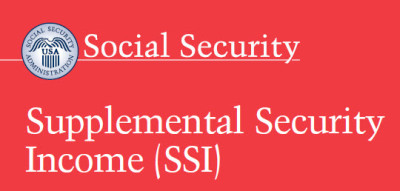Social Security benefits are a critical aspect of financial planning for many Americans, especially as they approach retirement age. One common question that arises is the relationship between Social Security income and the ability to earn additional income. As people continue to work, either full-time or part-time, understanding how these earnings interact with Social Security benefits is essential.
When it comes to earning unlimited income while drawing Social Security benefits, there is a specific age at which the earnings limit no longer applies. This age is crucial for retirees who aim to supplement their Social Security with wages from employment.
At what age can you earn unlimited income on Social Security?
Once you reach the full retirement age (FRA), you can earn an unlimited income without any reduction in your Social Security benefits. FRA varies depending on your birth year, but it typically falls between ages 66 and 67.
Understanding Full Retirement Age
Full retirement age is defined by the Social Security Administration (SSA) and is the age at which you can receive full benefits without any reduction, regardless of your earnings. Below is a table that outlines the FRA based on year of birth:
| Year of Birth | Full Retirement Age |
|---|---|
| 1937 or earlier | 65 years |
| 1938 | 65 years and 2 months |
| 1939 | 65 years and 4 months |
| 1940 | 65 years and 6 months |
| 1941 | 65 years and 8 months |
| 1942 | 65 years and 10 months |
| 1943-1954 | 66 years |
| 1955 | 66 years and 2 months |
| 1956 | 66 years and 4 months |
| 1957 | 66 years and 6 months |
| 1958 | 66 years and 8 months |
| 1959 | 66 years and 10 months |
| 1960 or later | 67 years |
Reaching your FRA means you can freely work and earn without affecting your Social Security payouts. However, if you decide to take benefits before reaching this age, it’s essential to understand how your earnings can affect your payments.
Earnings Before Full Retirement Age
If you begin receiving Social Security benefits before reaching your full retirement age, there are limits on how much you can earn without incurring a reduction in benefits. Specifically, for 2023, the earnings limit is set at $21,240. For every $2 earned above this limit, $1 will be deducted from your Social Security benefits.
Earnings Test Example
Here’s a breakdown to illustrate how the earnings limit functions:
- Annual Earnings: $25,000
- Earnings Above Limit: $25,000 – $21,240 = $3,760
- Benefits Deduction: $3,760 ÷ 2 = $1,880 will be deducted from your benefits.
A table summarizing the deductions can help clarify:
| Earnings Above Limit | Reduction in Benefits |
|---|---|
| Up to $21,240 | $0 |
| $21,241 – $30,000 | Varies (Deducting $1 for every $2) |
| Above $30,000 | Maximum deduction applies |
Implications of Early Retirement
Choosing to retire early can affect your long-term financial situation. Reduced benefits can impact your overall income during retirement, potentially requiring you to rely more on personal savings or other income sources.
Understanding the implications through a long-term projections table can provide more clarity on how earning and retirement choices affect overall Social Security benefits:
| Scenario | Monthly Benefits | Annual Income | Total Benefits After 5 Years |
|---|---|---|---|
| Full Retirement at 66 | $2,500 | $30,000 | $150,000 |
| Early Retirement at 62, Earn $25,000 | $1,800 | $25,000 | $150,000 (after deductions) |
| Early Retirement at 62, No Additional Income | $1,800 | $0 | $108,000 |
After Full Retirement Age: The Freedom to Earn
Once you reach full retirement age, the earnings limit disappears entirely. This allows individuals to work as much as they like without having their Social Security benefits affected. Many retirees choose to continue working for various reasons, including financial security, social interaction, and a sense of purpose.
Working While Receiving Disability Benefits
For individuals receiving Social Security Disability Insurance (SSDI), the rules differ. You can only earn a certain amount before your benefits stop. The monthly income limit for 2023 is $1,470 for non-blind individuals and $2,460 for blind individuals. However, there’s a trial work period that allows individuals to test their ability to work. During this period, beneficiaries can earn above the limits without immediate loss of benefits.
Trial Work Period Details
| Month | Earnings Allowed |
|---|---|
| 1-9 | Any amount |
After the trial work period, if earnings exceed the limit, SSDI benefits cease. However, Medicare coverage may still continue for a period even after benefits end.

Maximizing Social Security Benefits
To optimize your Social Security benefits, consider delaying benefits until your full retirement age or later if possible. This decision increases your monthly benefit amount significantly. The SSA provides a cost-of-living adjustment each year, so waiting can raise your benefits more over time.
Additional Considerations
- Investment Opportunities: Many retirees invest their earnings for growth and generate additional income.
- Part-Time Work: Engaging in part-time work can provide social opportunities while enhancing financial security.
- Impact on Taxes: Earnings can influence tax obligations on Social Security benefits. Ensure to consult a tax professional to navigate any complexities.
In conclusion, understanding the right age for unlimited income on Social Security is vital for financial planning in retirement. Knowing when to begin benefits, how to navigate earnings limits, and the implications of work can help retirees manage their finances effectively. Planning ahead can create a more secure and fulfilling retirement experience.

